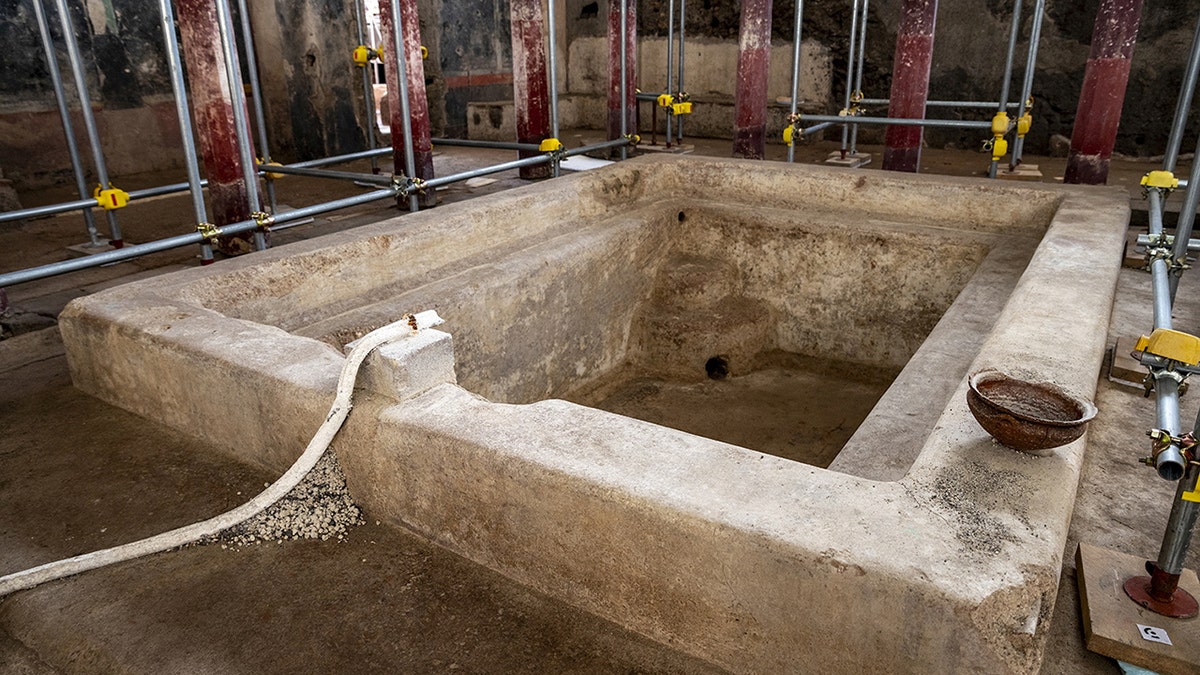A recently excavated private bath complex in Pompeii reveals the luxurious lifestyle enjoyed by the city's elite before the devastating eruption of Mount Vesuvius in 79 AD. This elaborate facility, complete with hot, warm, and cold rooms, could accommodate up to 30 guests. Adjacent to the baths is a banquet hall adorned with captivating scenes from Greek mythology, painted on striking black walls. This discovery provides a glimpse into the social dynamics and opulent living of Pompeii's upper class.
The bath complex is part of a larger, grand residence unearthed over the past two years. This residence, believed to have belonged to a prominent member of Pompeii's elite, features a central courtyard with a magnificent basin, further showcasing the owner's wealth and status. Gabriel Zuchtriegel, director of the Pompeii Archaeological Park, emphasizes that these Roman houses served not only as private dwellings but also as venues for public life and displays of social standing. The layout of the complex evokes scenes from the Roman novel "The Satyricon," highlighting the importance of banquets and baths in showcasing wealth and prestige.

Frescoes within the complex draw inspiration from Greek culture, underscoring themes of leisure and intellectual pursuits. Zuchtriegel suggests the homeowner aimed to create a spectacle, transforming their residence into a space reminiscent of a Greek palace and gymnasium. The remains of over 1,000 victims have been discovered in Pompeii, including two bodies found within this particular residence—a woman between 35 and 50 years old, clutching jewelry and coins, and a younger man. The discovery of these bodies was announced in the previous year.
Comments(0)
Top Comments